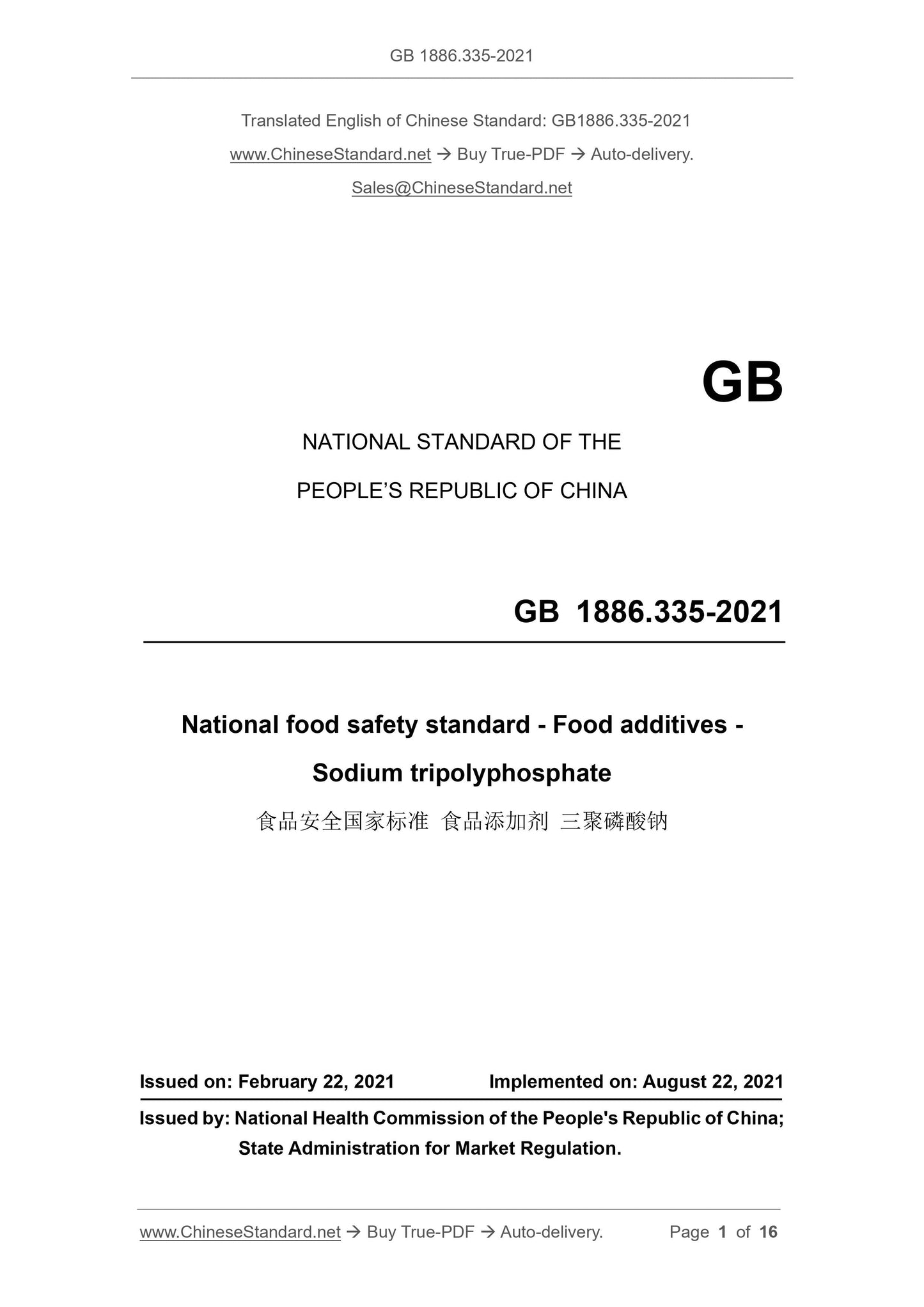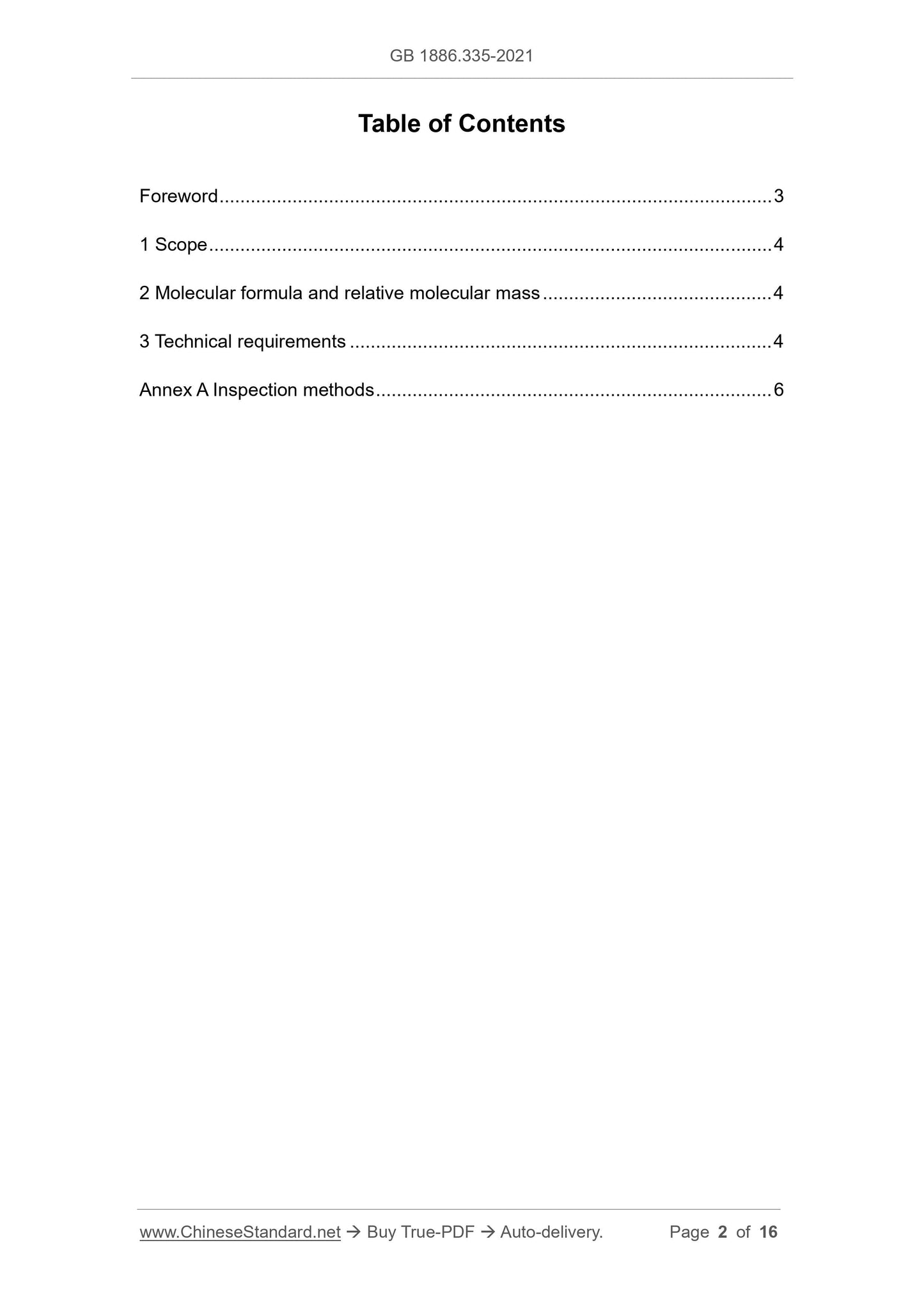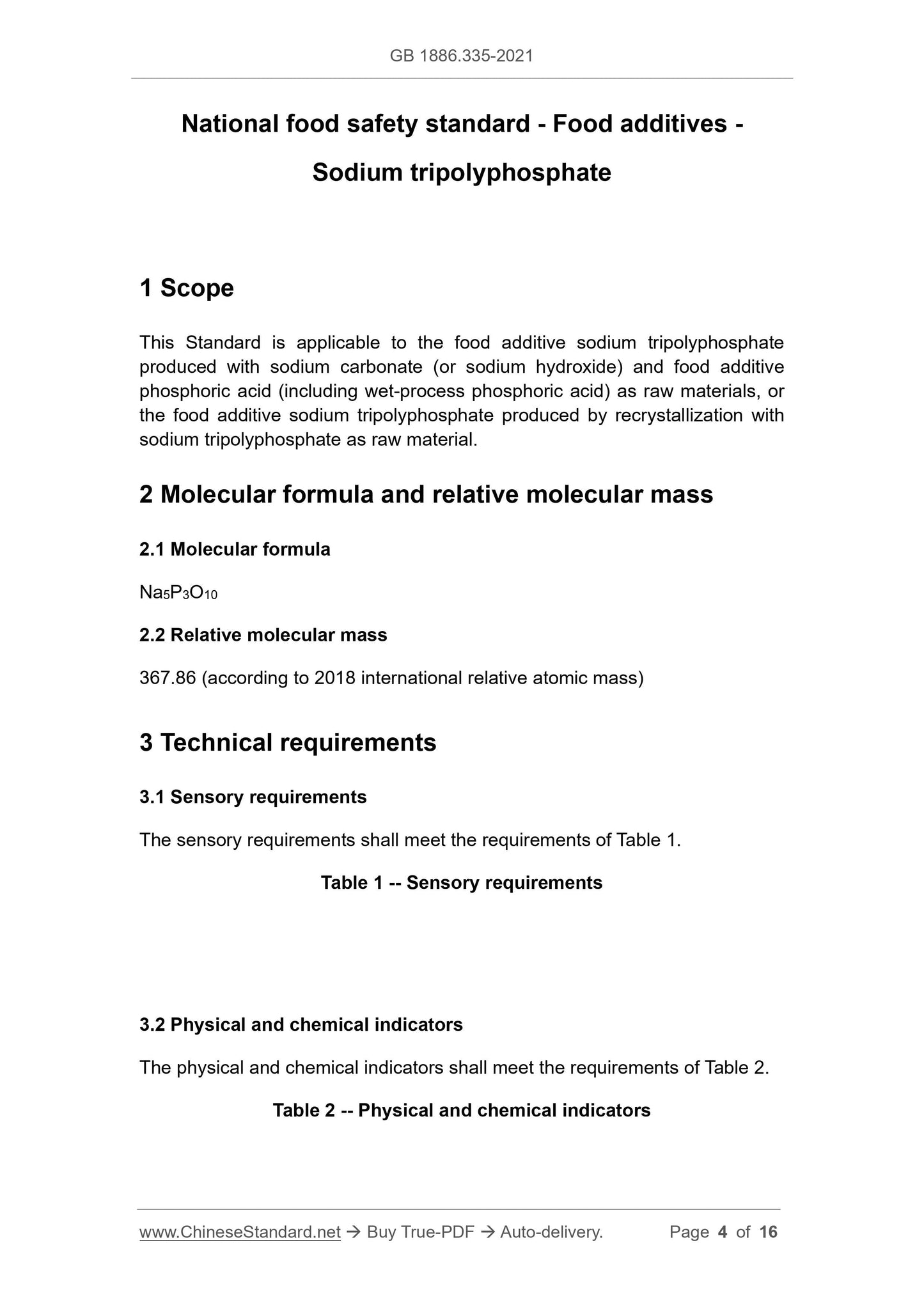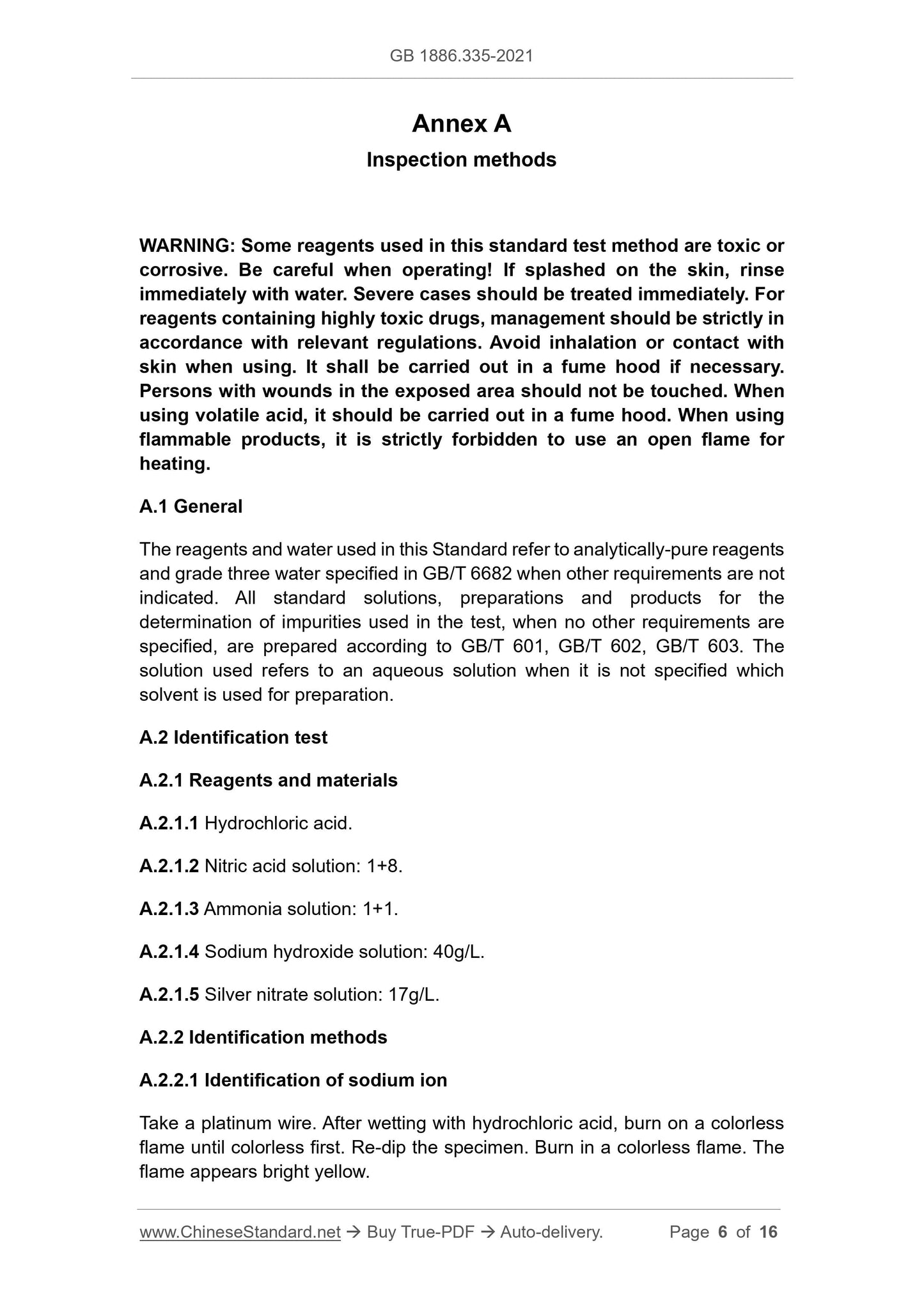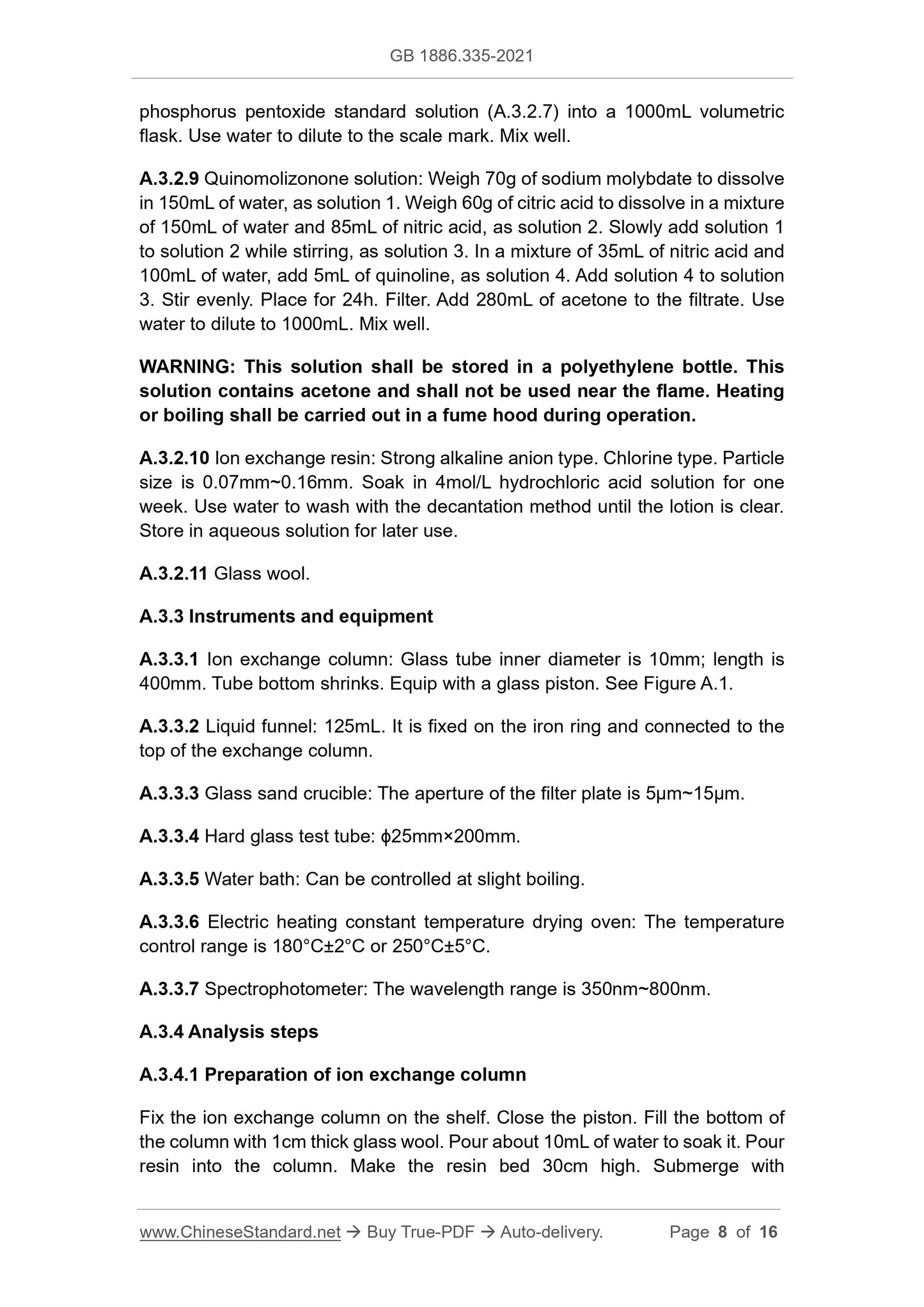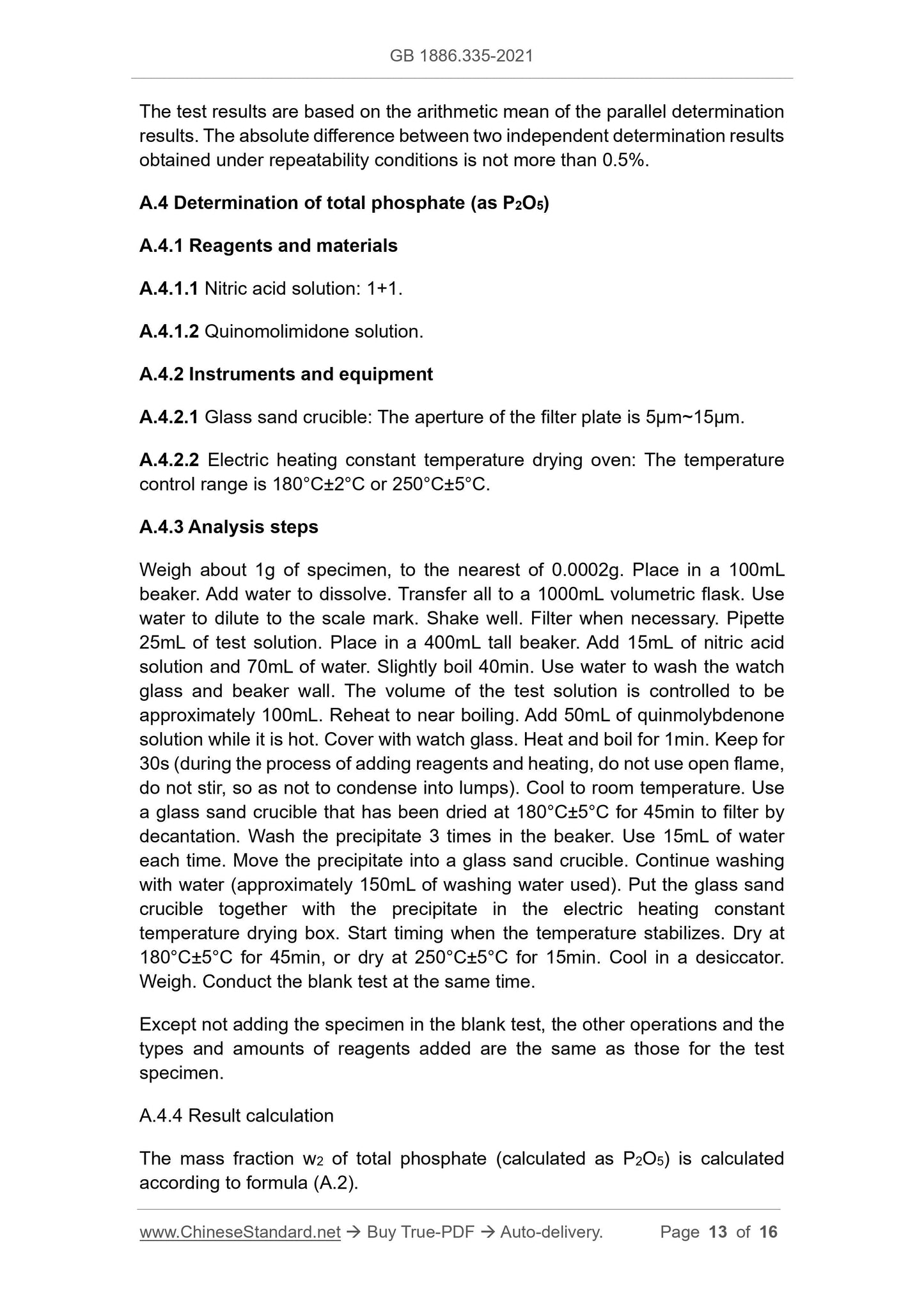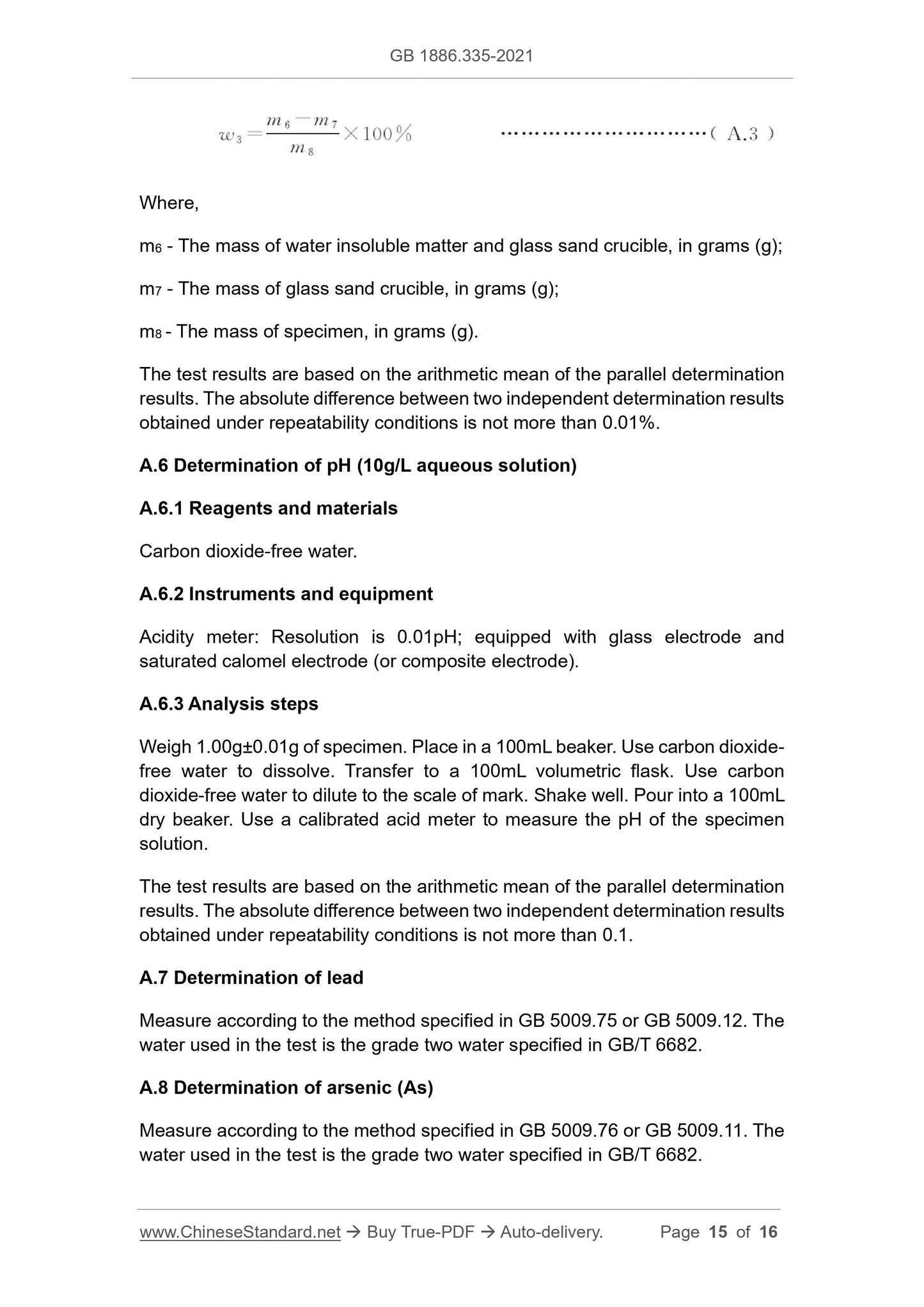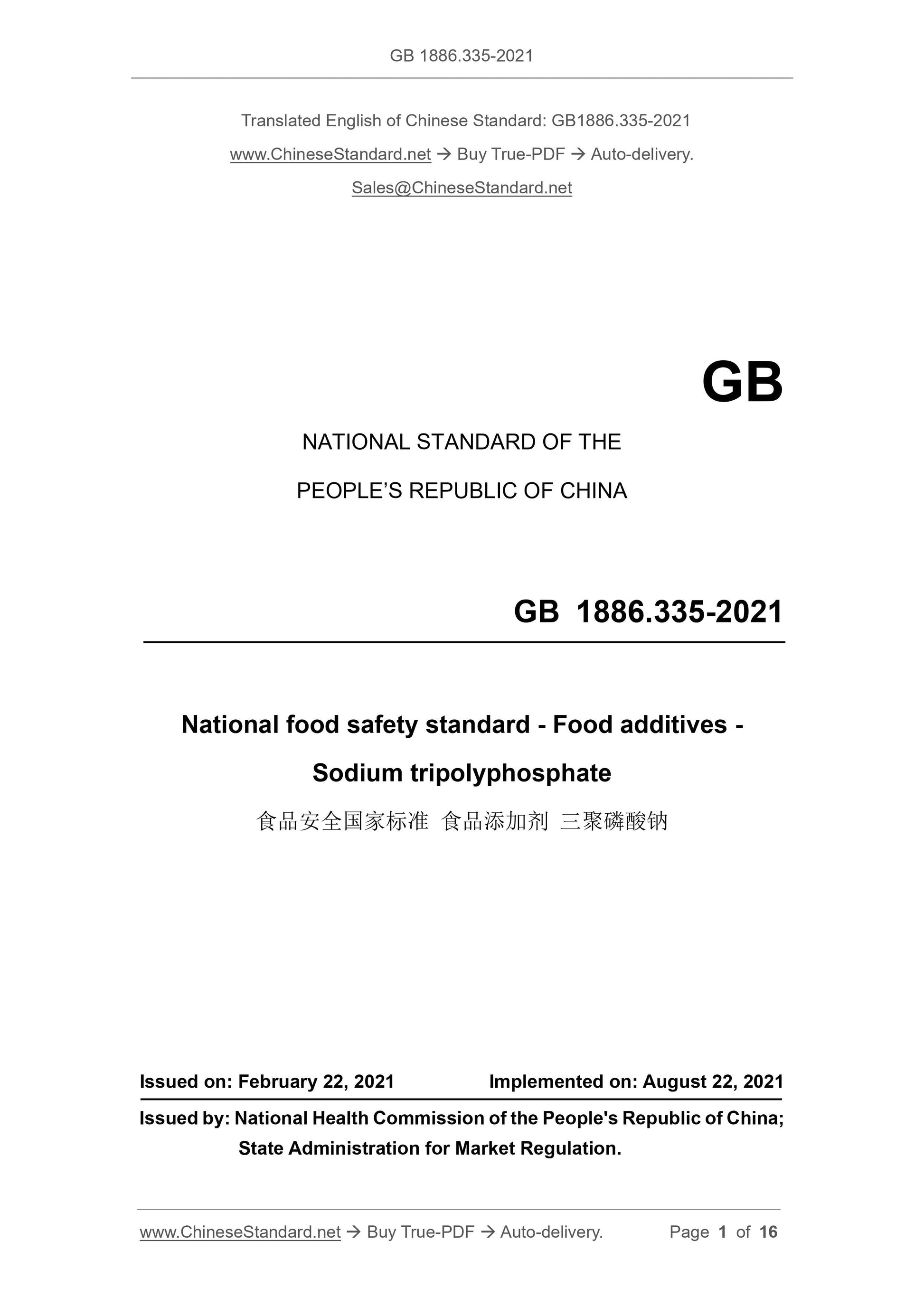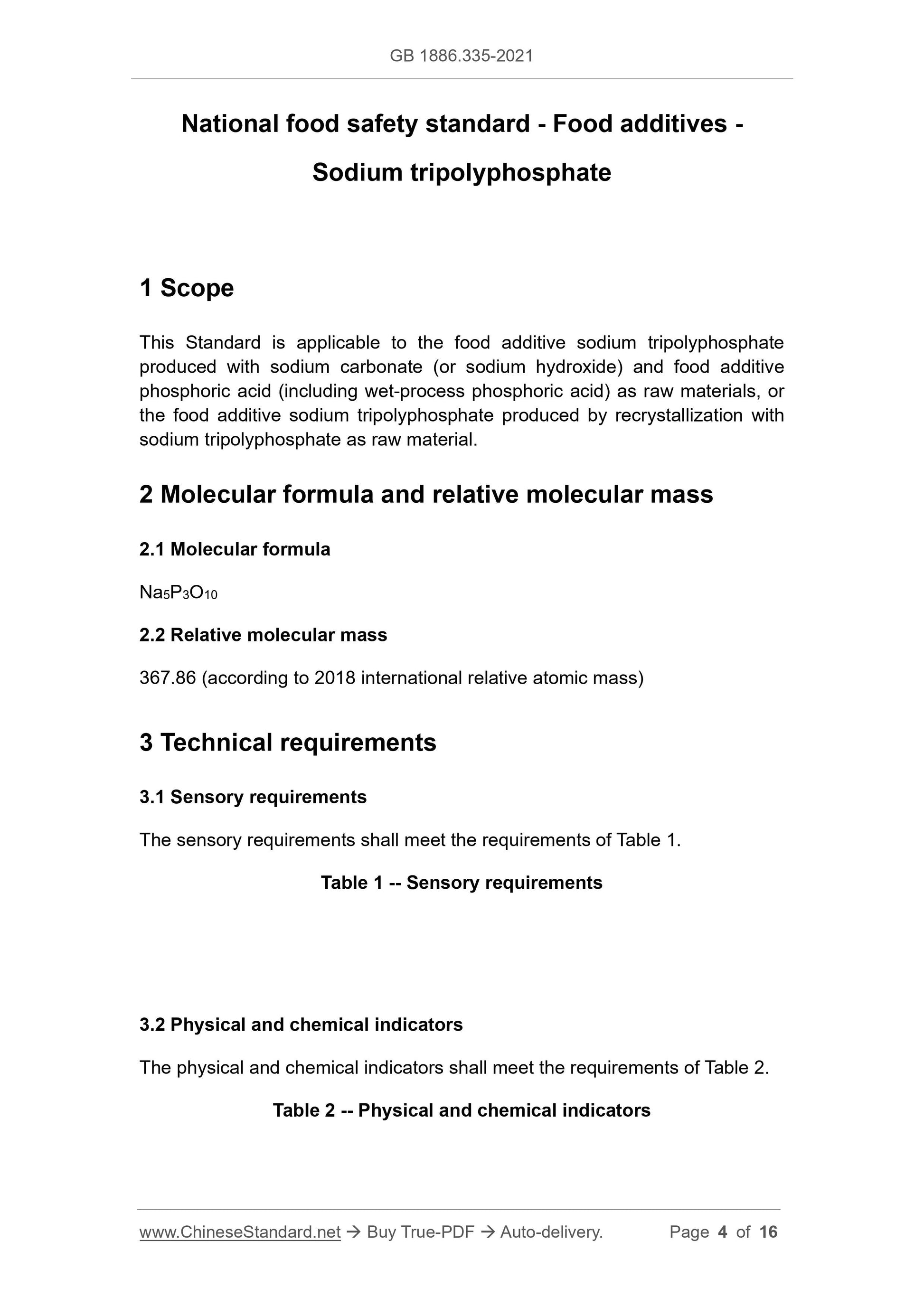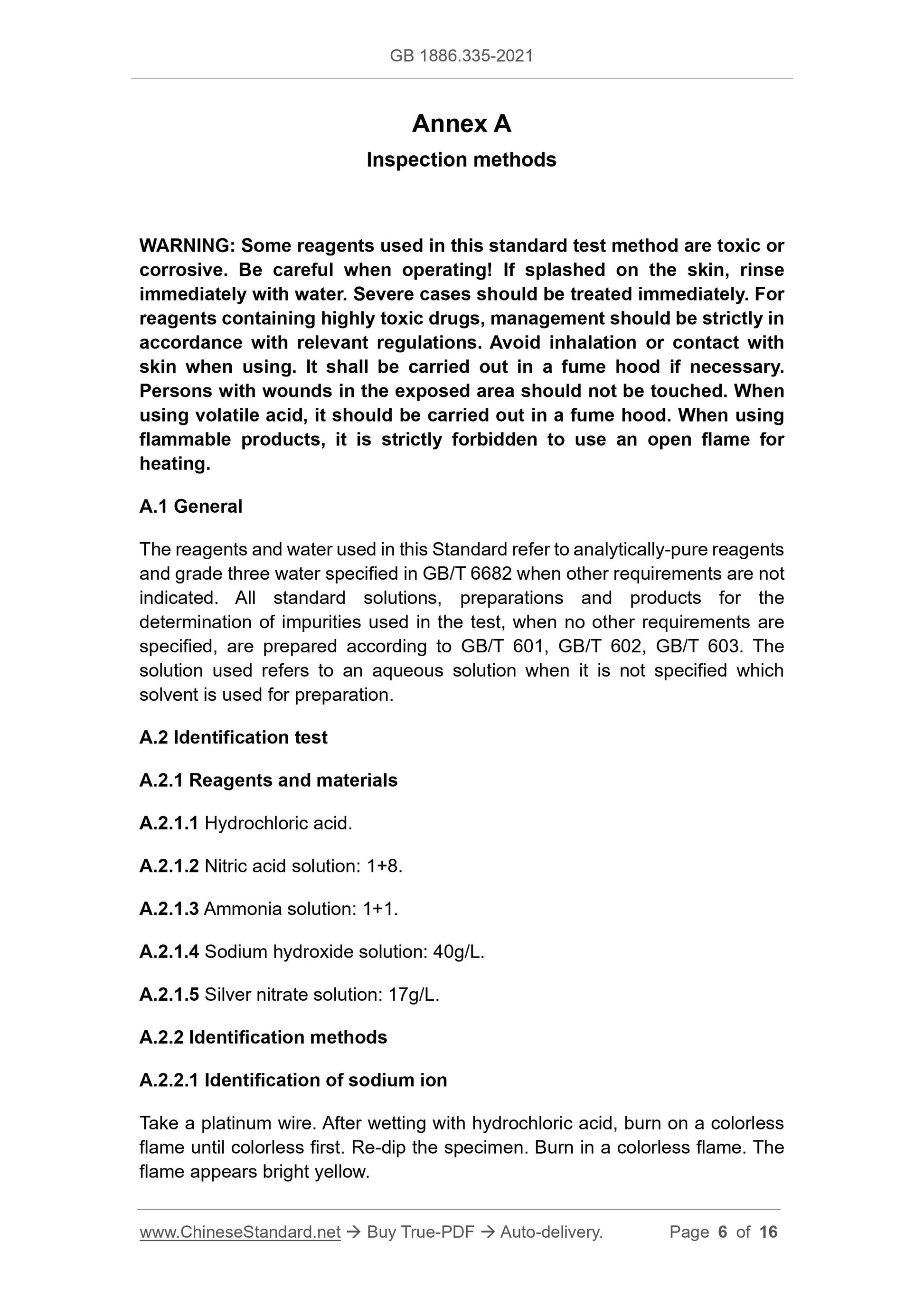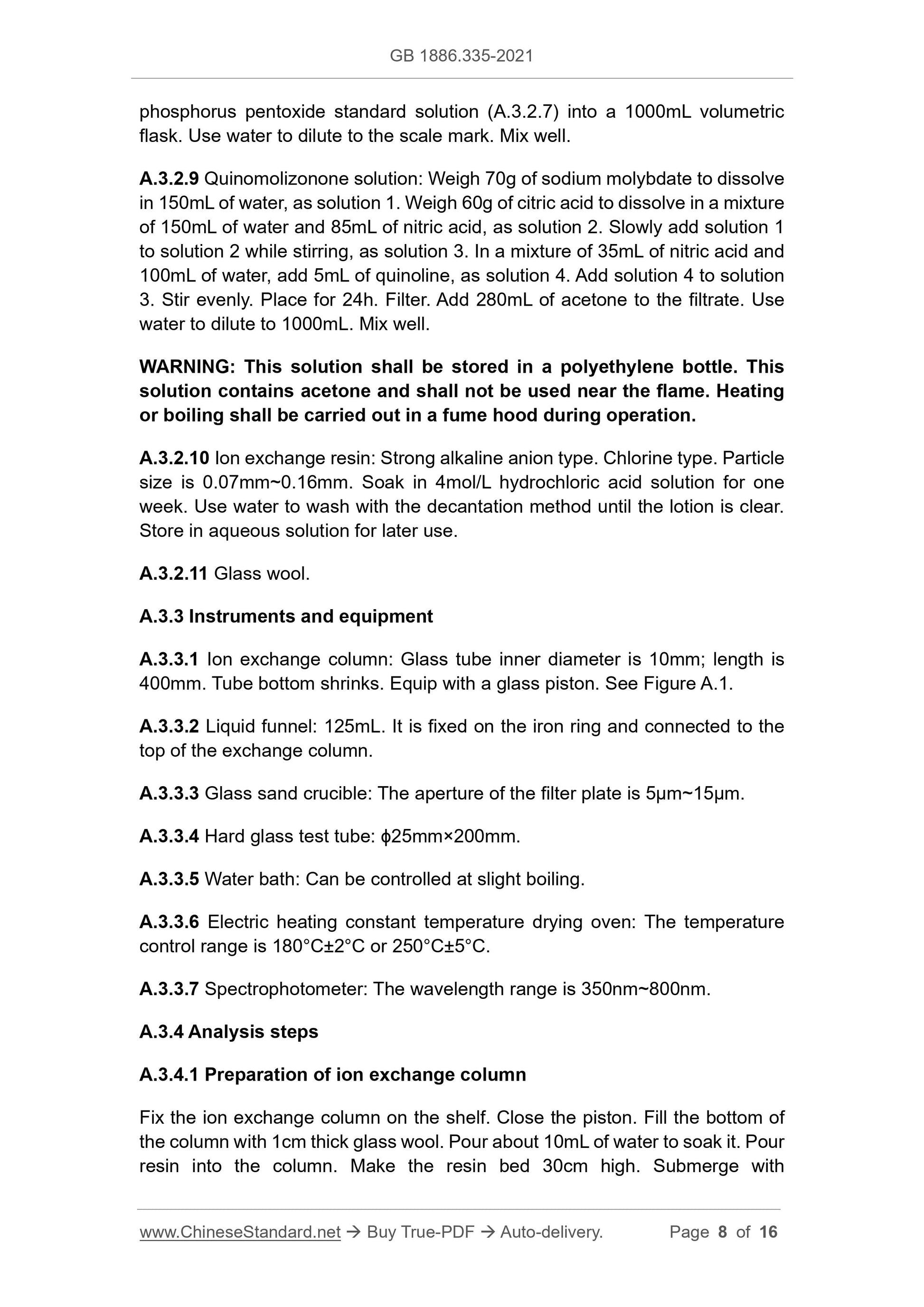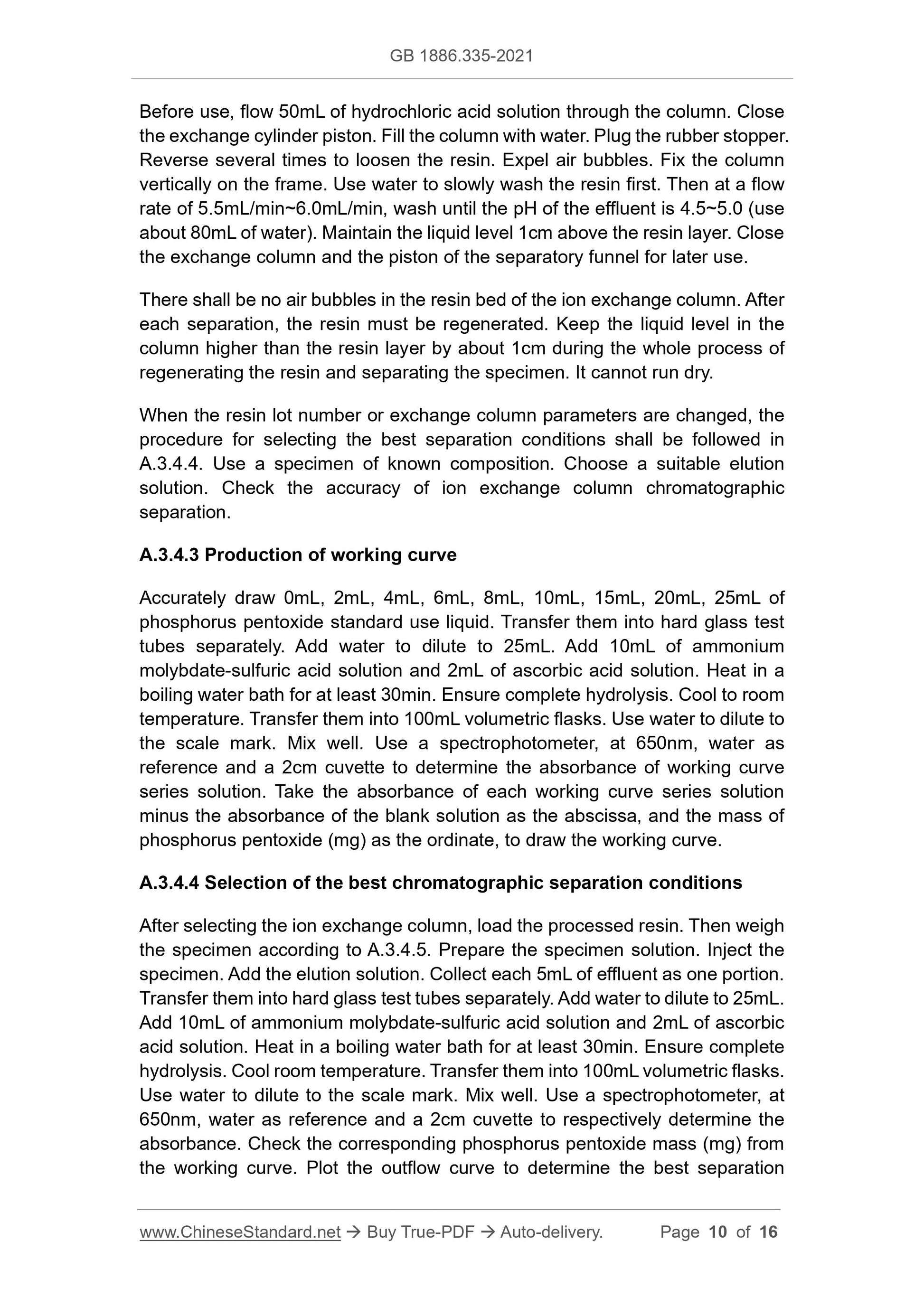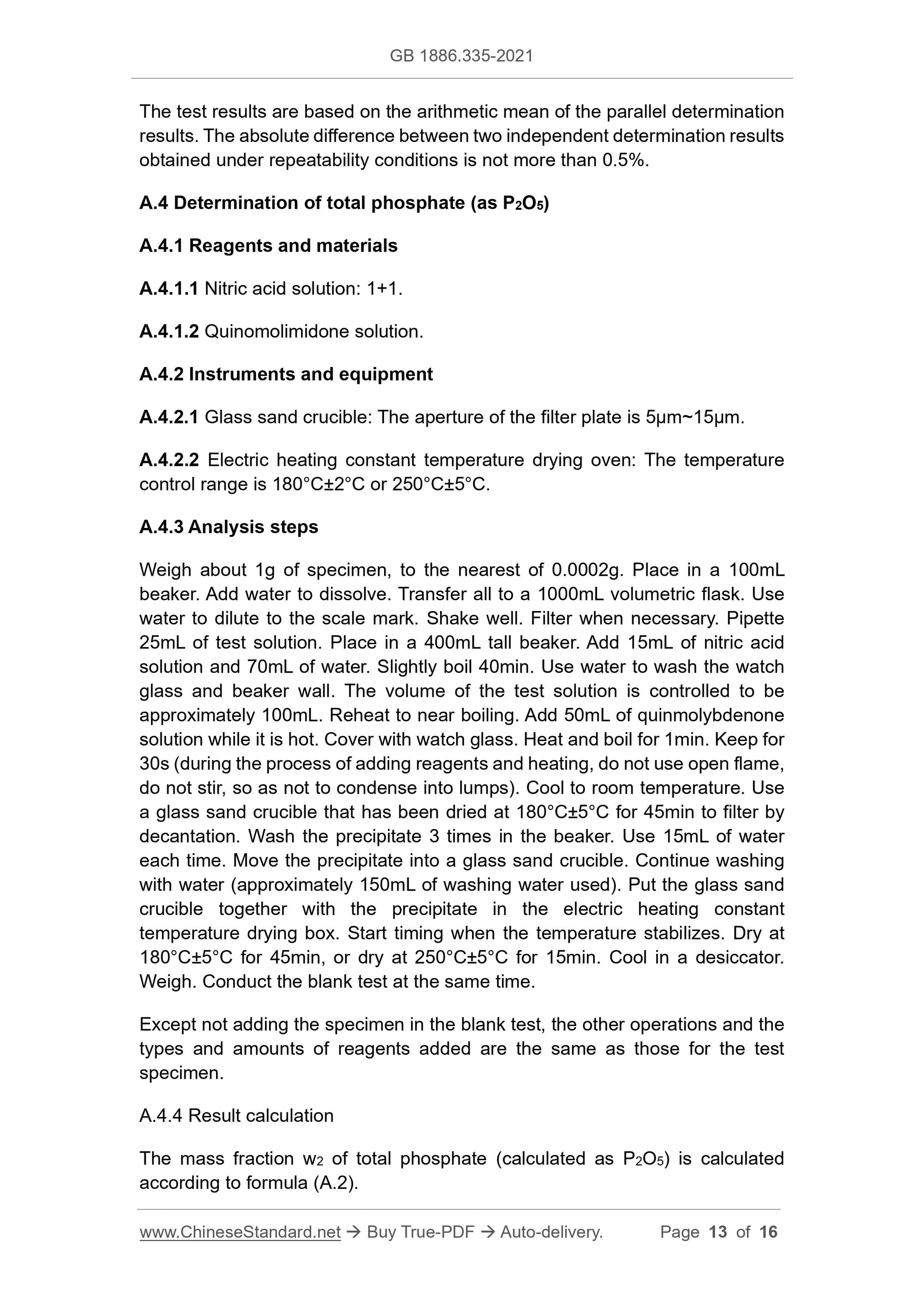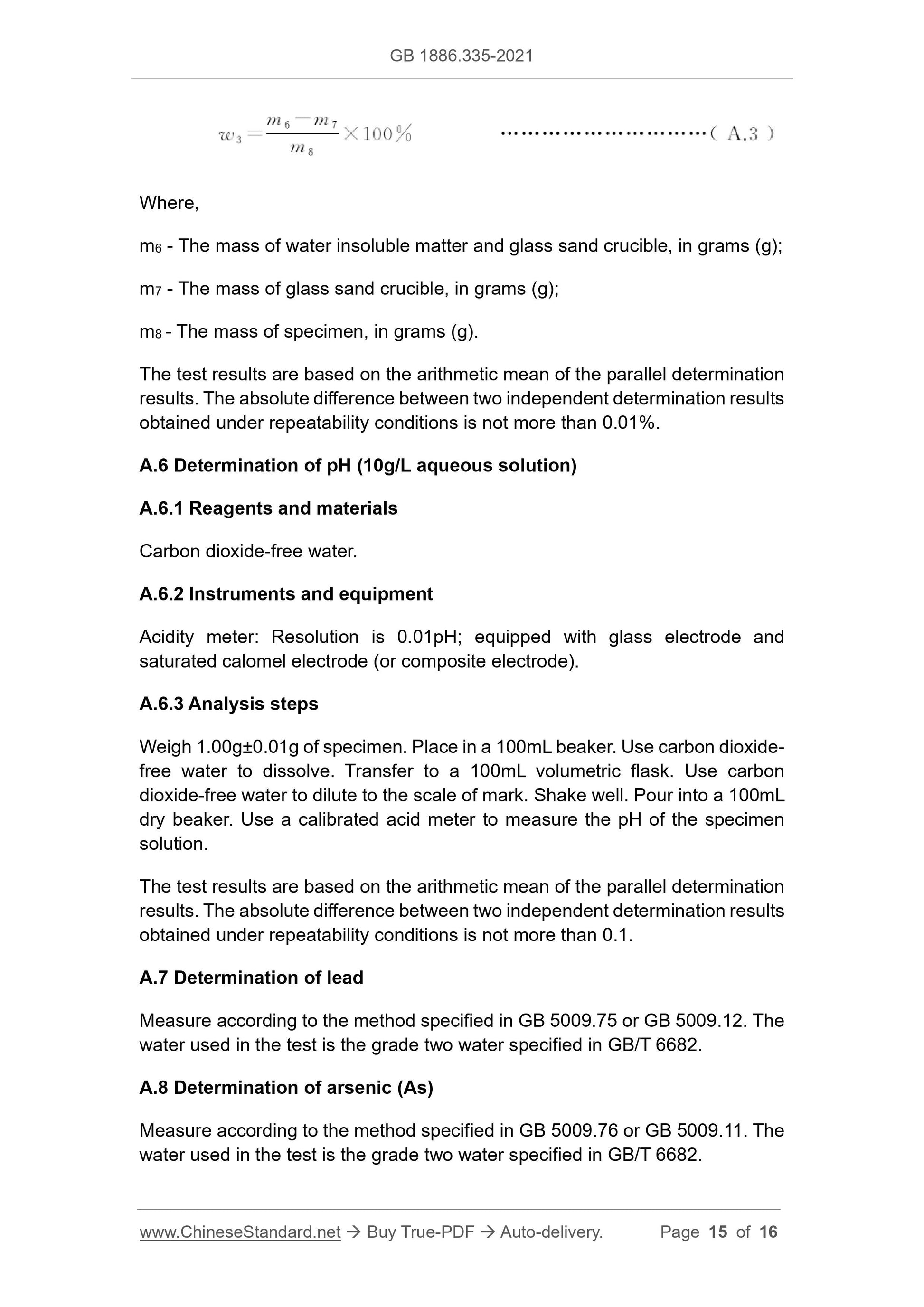1
/
of
8
www.ChineseStandard.us -- Field Test Asia Pte. Ltd.
GB 1886.335-2021 English PDF
GB 1886.335-2021 English PDF
Regular price
$170.00
Regular price
Sale price
$170.00
Unit price
/
per
Shipping calculated at checkout.
Couldn't load pickup availability
GB 1886.335-2021: National food safety standard - Food additives - Sodium tripolyphosphate
Delivery: 9 seconds. Download (and Email) true-PDF + Invoice.Get Quotation: Click GB 1886.335-2021 (Self-service in 1-minute)
Newer / historical versions: GB 1886.335-2021
Preview True-PDF
Scope
This Standard is applicable to the food additive sodium tripolyphosphateproduced with sodium carbonate (or sodium hydroxide) and food additive
phosphoric acid (including wet-process phosphoric acid) as raw materials, or
the food additive sodium tripolyphosphate produced by recrystallization with
sodium tripolyphosphate as raw material.
Basic Data
| Standard ID | GB 1886.335-2021 (GB1886.335-2021) |
| Description (Translated English) | National food safety standard - Food additives - Sodium tripolyphosphate |
| Sector / Industry | National Standard |
| Classification of Chinese Standard | X09 |
| Word Count Estimation | 12,159 |
| Issuing agency(ies) | National Health Commission of the People's Republic of China, State Administration for Market Regulation |
Share
